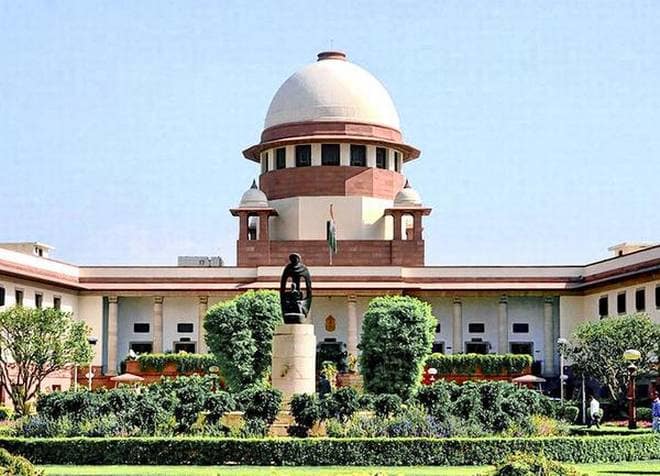In a major setback to the BJP, the Apex court of India has directed the party to seek fresh approval for a ‘rath yatra’ from the state government of West Bengal saying that the WB government’s concerns weren’t “unfounded”. The court, however asked the state government to allow BJP rallied and meetings in the state.

BJP had approached the Supreme Court seeking permission to take out a ‘rath yatra’ after a Calcutta High Court had set aside an order that gave permission for the yatra.
Since October 2018, BJP had been trying to build a “Rath Yatra” campaign which it later changed to a Gantantra Bachao Yatra (Save Democracy March) since it got embroiled in controversies. The Yatra which was to be flagged off by BJP national president Amit Shah is also scheduled to be addressed by Prime Minister Narendra Modi.
Though the said purpose of the Yatra was to “publicise the success of the present Central Government” and “to condemn the misrule of the State Government under Mamata Banerjee”, and “propagate the establishment of democracy in the state of West Bengal”, many factors point to the fact that the strategic choice of areas to be covered by the Yatra points to the fact that the intent of the Yatra is communal.
Moreover, right wing websites openly proclaimed that the yatra is meant to consolidate the “Hindu vote” since the state is strife with “minority appeasement.”
West Bengal BJP president Dilip Ghosh had told PTI in October that the first rath yatra will begin from “the temple town of Tarapith in Birbhum district on 3 December”. It was said that the Yatra will start from Birbhum district to “protest the reign of terror allegedly unleashed by the ruling Trinamool Congress in Bengal,” the Indian Express had reported.
While Shah was scheduled to lead the Yatra from Birbhum district, the second rath yatra from Sagar Island was scheduled to be led by Uttar Pradesh CM Yogi Adityanath against the “appeasement politics of the TMC”. The final rath yatra was to be led by Assam Chief Minister Sarbananda Sonowal; and supposed to begin from West Bengal’s Cooch Behar district, and was meant as a protest against “the infiltration of Bangladesh into West Bengal,” according to the Indian Express.
Important thing to note is that the Rath Yatra was programme was to cover all 42 Lok Sabha constituencies in the state ahead of the 2019 general elections.
On December 20, a single judge bench of Calcutta High Court passed an order allowing the “Ganatantra Bachao” Rath Yatra, saying that the threat to public order must be “real, not imaginary or a likely possibility.” This enabled BJP to conduct 3 rallies with conditions. The Court had directed the party to inform the Superintendent of the Police of the concerned district 12 hours before the entry of the Yatra in the district. Other conditions that it had imposed were abiding by traffic regulations, following every just directions, deployment of extra police personnel to ensure there’s no breach of law and order.
In turn, the State Government filed an appeal to a higher division bench and on December 21, the division bench stayed the Rath Yatra yet again.
Afterwards, the party (BJP) moved an “urgent hearing” petition for the yatra. But the Supreme Court declined urgent hearing on the plea and has said that the matter will be listed in normal course
Many areas in West Bengal are gradually turning into communally sensitive pockets.
Gangasagar one of the three points from where the rally was to start off, was the first place where VHP started its office, 20 years back. Few years back even the Rashtriya Swayamsevak Sanh (RSS), also set up their office in Gangasagar.
On the other hand, in Cooch Behar, as claimed by the ruling party, Madanmohan is the most revered deity housed in a temple built by the royals. The Madanmohan temple was set up by King Nripendra Narayan in 1890. Every year, the deity is taken out on a chariot during Rath Yatra celebrations.
Tarapith is another town, known as temple town in the state.
Many leaders of the opposition party and civil liberties activists had clearly expressed their fears of this yatra turning into a communal yatra, especially keeping into mind that it was has been planned for all 42 parliamentary constituencies.
35 reports have been submitted by the district magistrates, the superintendents of police and intelligence officials of various wings seemingly highlighting how the Rath Yatra can turn problematic and communally sensitive.
The yatra that spans over a period of 39 days will pose major logistical challenges as well. Deploying police personnel for the entire course of yatra is deemed to put additional pressure on the law and order situation in the state.
Recently, West Bengal has witnessed many communal clashes and riots, armed rallies of various Hindutva outfits raising anti-Muslim slogans during Ram Navami, aggressive celebrations of Hanuman Jayanti across the state. The politics of the state has been charged with communal overtones, even in the process of NRC and various statements by senior BJP leaders like Amit Shah threatening to deport Bengali Muslims from Bengal to Bangladesh and the state is on a constant boil where any untoward incident may push it towards a situation of extreme chaos and mayhem.
In the light of these concerns, this seems to be a good move by the Supreme court.